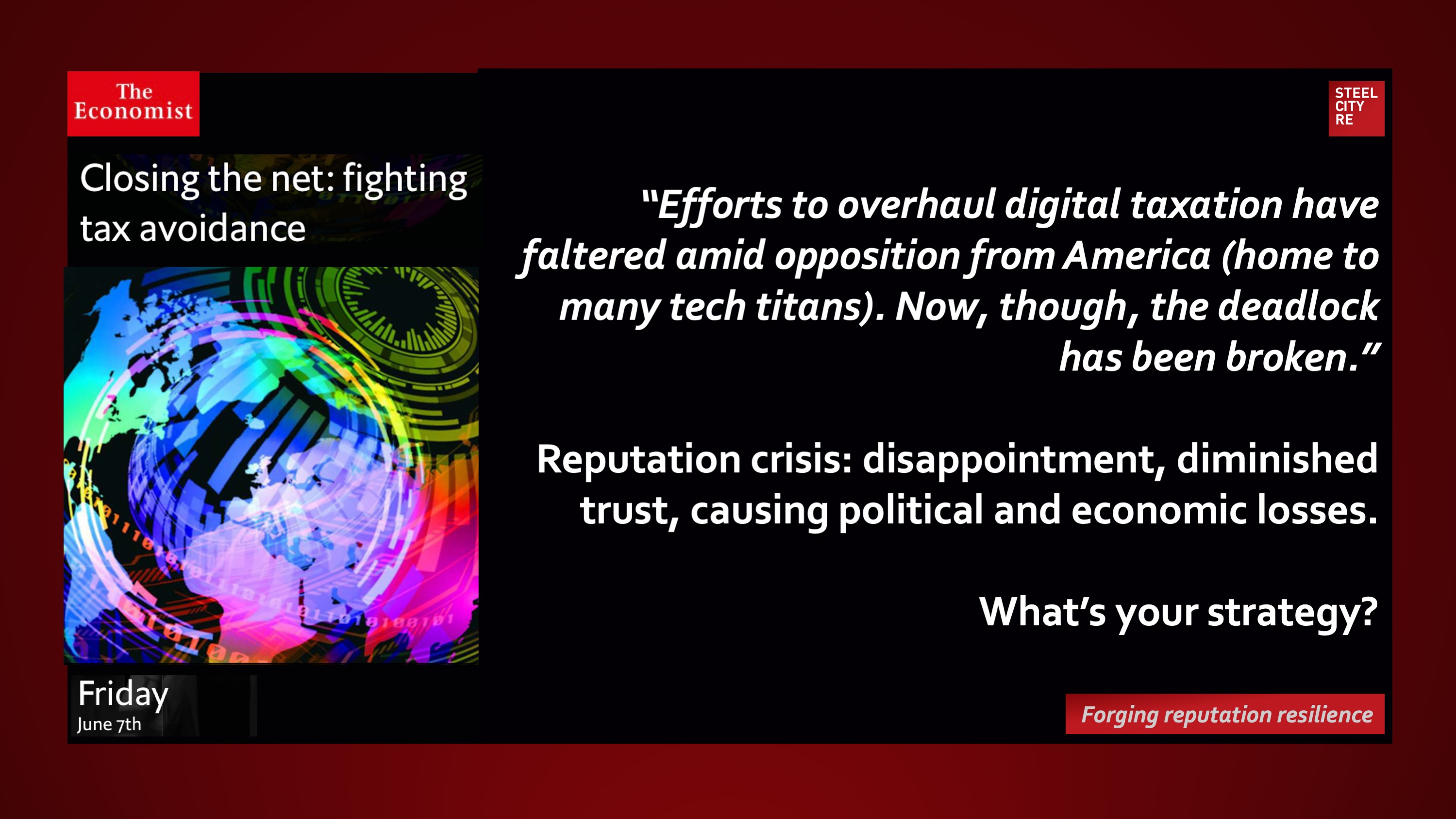“(Shifting assets to tax havens). In 2015 the OECD estimated that such shell games deprive exchequers of up to $240bn—10% of global corporate-tax revenues—annually. … This weekend the G20 countries, backed by over 100 others, are expected to endorse a “roadmap” for agreement on a minimum level of tax and on reallocating taxing rights towards countries where customers are located and real economic activity takes place.”
Economist
June 8, 2019
“Efforts to overhaul digital taxation have faltered amid opposition from America (home to many tech titans). Now, though, the deadlock has been broken.”
The reputation crisis facing the technology giants–stakeholder disappointment, diminished trust, causing political and economic losses–continues to extract its financial toll.
For a broader view of reputation risk, discover additional articles by Steel City Re here, mentions of Steel City Re here, and comments on newsworthy topics by Steel City Re here. To read an abstracted summary of reputation risk, see below.
Reputations are valuable strategic intangible assets. Threats to these assets⏤ enterprise reputation risks, often mislabeled “brand risks” ⏤ need to be managed, and management needs to be overseen through reputation risk governance lest reputational damage or reputational harm result in long-tailed go-forward losses in economic value and/or political power. Because these intangible risks arise from the interplay of stakeholder expectation, experiences, and media amplification, parametric insurances for intangible asset risks, for reputational value, for reputational harm, and for reputation assurance help mitigate risk by telling a simple, convincing and completely credible story of quality reputation governance to stakeholders. This story telling effect is the expressive power of insurance complementing insurance’s better known instrumental power of indemnification.
Risk management, risk financing in insurance captives, and risk transfer through reputation insurances comprise the constituent elements of a comprehensive solution.
What’s your strategy?

